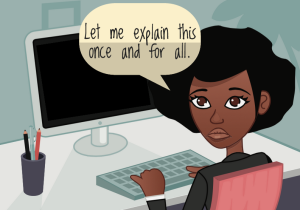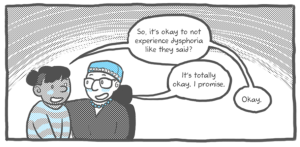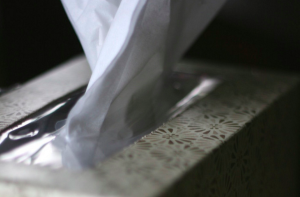Francesca Fiorentini: When it comes to mental health in the US, there’s a lot of talk and little action. Many fault mental illness for things like mass shootings, even though most mentally ill are not violent. But few point out that every year, 44 million adults will experience a mental illness and less than half will receive care. And 40% of those with severe illnesses, like schizophrenia or bipolar disorder, won’t get the help they need.
Here are five ways the mental health care system is in crisis.
1. Institutions
Compared to fifty years ago, there are far fewer in mental institutions today, which sounds like a good thing. When you think about mental institutions, you think about Girl, Interrupted or One Flew Over the Cuckoo’s Nest – scary places with mean staff or catatonic patients, unsanitary, inhumane, lobtotomies. Which was true according to a bunch of exposés on mental hospitals back in the day. Public outrage combined with the first effective antipsychotic drug put politicians on a path of reform.
So in 1963, JFK signed the Community Mental Health Act, which accelerated what’s known as de-institutionalization. That means institutions were closed and patients moved back into their communities. They were supposed to get care in newly funded community mental health centers. The idea was to create a less restrictive setting and protect patient civil rights.
Good plan, but after all these years, these community mental health centers still have never been fully funded, and the program has fallen by the wayside. And a lot of people who were released never got the services they needed. Then, in 1988, President Reagan slashed federal mental health spending by 25%. So where do people end up?
2. Jails & Prisons
For a lot of them: jail. In 2012, there were ten times as many mentally ill people in prisons and jails than in state hospitals and close to 400,000 adults with untreated mental illness are in jails. In effect, prisons are the new mental institutions, which according to the National Alliance on Mental Illness, wouldn’t be the case if there were better services.
3. Access
There also aren’t enough people to help. There are fewer psychiatric professionals to go around compared to other health care professionals. Close to 90 million Americans live in areas with a shortage of mental health care providers, which can mean long waits for treatment or long distances to travel. Or there just are no options period. Because if you really need help and inpatient care, the US only has 28% of the beds needed.
4. Costs
Even if you find the perfect doctor, your insurance might not cover your treatment plan. Insurance companies used to be able to charge higher co-pays for psychiatric care than for other medical treatments and limit the number of visits all the way up until 2008, when the Mental Health Parity and Addiction Act forced insurers to cover mental illness equally. But experts say insurers are still finding loopholes. And what about all those people who didn’t get access before the law changed?
You might go see your regular doctor once a year, but if you need to see a psychiatrist once a week, those co-pays add up, especially when you’re on a tight budget. New rules or not, cost is a real barrier. And non-traditional treatments like acupuncture often aren’t covered. Of course, in order for any treatment to work, patients have to seek it out.
5. Stigma
And the stigma against mental illness can hold people back. We often treat mental illness as dangerous or as a character flaw, and the fear of being ostracized or institutionalized is real. That’s why admitting you need help is the first challenge and the second is actually getting it. So isn’t it time we have a conversation about mental health that actually leads somewhere instead of just throwing up our hands?




















